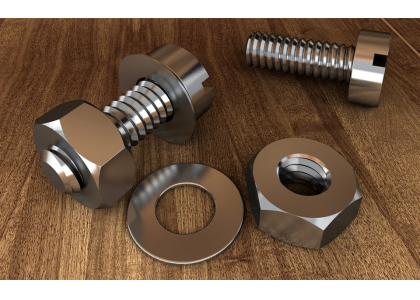
In daily work, we often come into contact with a variety of fasteners, of which screws and bolts are the two most common types. Although they are very similar in appearance and use, in fact, they have many differences in materials, sizes, uses, and so on.
Material variance
Screws are usually made of steel, copper, zinc alloy and other materials, of which stainless steel screws have a wider range of applications in some occasions. In contrast, bolts are usually made of mild steel, aluminum or stainless steel and require special treatment for different use environments to enhance their corrosion resistance. Therefore, when selecting fasteners, the requirements of the environment and working environment should be considered.
Size difference
Screws and bolts vary in size with different specifications and types. For example, an M6 bolt means a bolt with a diameter of 6mm, while an M6 screw means a screw with a diameter between 6 and 7mm. In practical applications, we need to choose the right size according to the specific needs to ensure the fastening effect and safety. In addition, in order to improve work efficiency and accuracy, special measuring tools can be used to ensure that the selected fasteners meet the requirements.
Use variance
Screws and bolts differ in many ways. On the one hand, depending on the connection object, screws are usually used to connect lighter objects, such as wooden furniture, plastic products, etc. Bolts are more commonly used to connect heavier objects, such as mechanical equipment, building structures, etc. Bolts, on the other hand, are usually used for fixed connections, while screws are used for detachable connections. This determines the difference between the two in the use method and precautions.
Tightening technique difference
Proper use of screws and bolts is key to ensuring their effectiveness. In the installation process, first choose the appropriate tool (screwdriver or wrench) to ensure that the direction and size of the force is correct; Secondly, it is necessary to follow the principle of "from small to large" and tighten gradually to avoid damage or deformation of fasteners due to excessive force; Finally, pay attention to the degree of tightening after tightening to ensure that the connection is stable and reliable. In addition, in some special occasions (such as high pressure, high temperature, low temperature and other environments), appropriate fastening techniques should be used to ensure safety.
In short, screws and bolts are two common fasteners, screws and bolts are similar in appearance, but there are differences in material, size, use and so on.